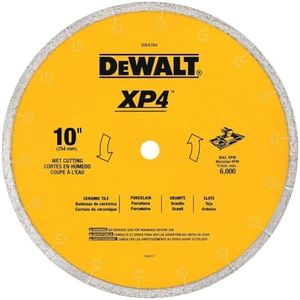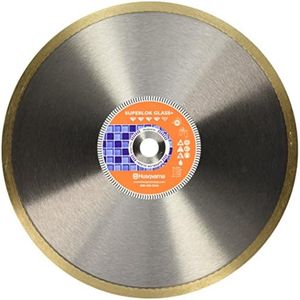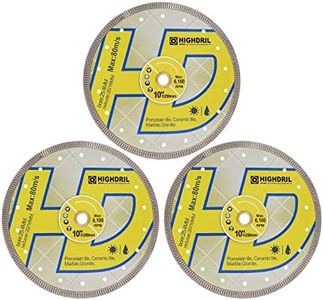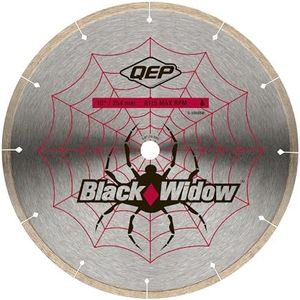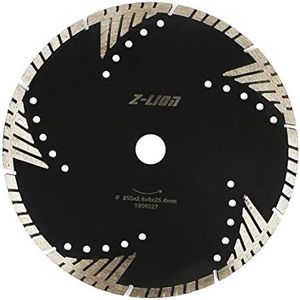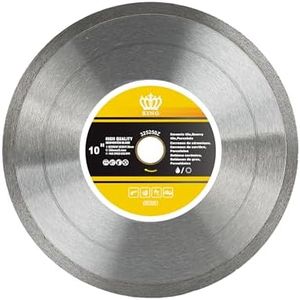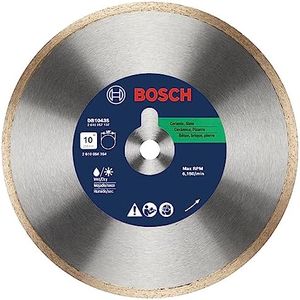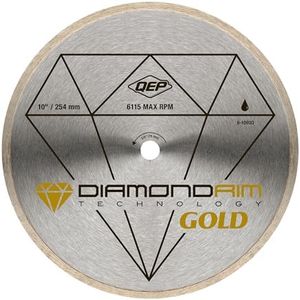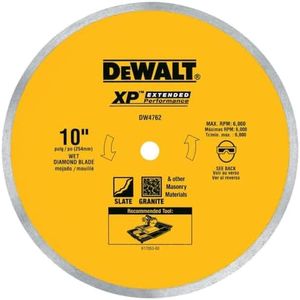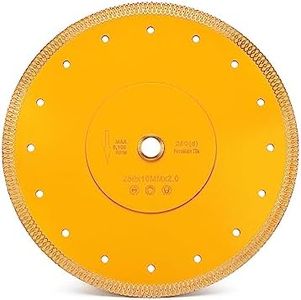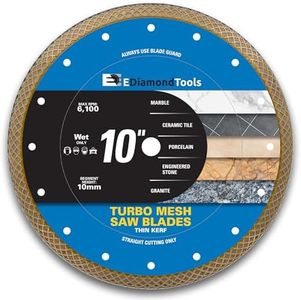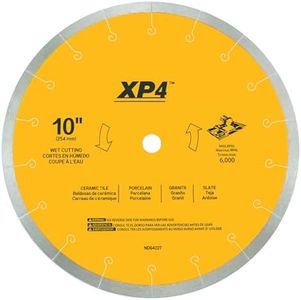We Use CookiesWe use cookies to enhance the security, performance,
functionality and for analytical and promotional activities. By continuing to browse this site you
are agreeing to our privacy policy
10 Best 10 Tile Saw Blades
From leading brands and best sellers available on the web.Buying Guide for the Best 10 Tile Saw Blades
Choosing the right 10-inch tile saw blade is essential to achieving smooth, clean cuts and extending the life of your blade and your saw. Not all blades are the same—each is tailored to work best with particular materials, cutting speeds, and usage patterns. By understanding the key specifications of tile saw blades, you can make a smarter choice that matches your work type, whether it's occasional DIY projects or regular professional renovations. Always think about your tile material, the finish you want, and how often you'll use the blade when making your selection.Blade Type (Continuous Rim vs. Segmented vs. Turbo)The blade type determines how the blade cuts and what materials it's suited for. Continuous rim blades have a solid, smooth edge that makes very fine, chip-free cuts—ideal for fragile tiles like porcelain or glass. Segmented blades have cut-out gaps (segments) that improve cooling and debris removal, which makes them better for tougher materials such as stone or concrete, but they create rougher cuts. Turbo blades have a serrated edge that offers a middle-ground: they provide faster cuts than continuous rim blades while producing a smoother finish than segmented blades. Think about what type of tile you'll cut most often: for clean, delicate cuts go with continuous rim, for tough tiles that need aggressive cutting select segmented, and for a blend of speed and quality, go for turbo.
Diamond ConcentrationDiamond concentration refers to how much synthetic diamond is embedded in the blade's cutting edge. Higher diamond concentration allows for smoother, more durable cutting, especially important for harder tiles. Low concentration blades are generally less expensive and are well-suited for softer, less dense tiles. For regular or demanding work on hard porcelain or natural stone, look for higher diamond content; if you’re working on occasional ceramic jobs, a lower concentration can suffice.
Arbor SizeArbor size is the diameter of the hole at the center of the blade, and it must match the shaft of your tile saw for a secure fit. Most 10-inch tile saw blades have a standard arbor size—often 5/8 inch, but always check your saw's specifications before buying. Using a blade with the wrong arbor size can be dangerous and lead to improper operation. Always confirm your saw’s arbor requirement and ensure the blade matches it.
Blade ThicknessBlade thickness affects both the quality of the cut and the durability of the blade. Thinner blades make finer cuts with less chipping, which is preferable for high-quality finish work, but they are more prone to warping and may not last as long. Thicker blades withstand more stress and last longer, especially when used on harder materials, but they can chip delicate tiles or create wider kerfs (cuts). If precision is key—such as with decorative or glass tiles—choose thinner blades; if longevity and resilience matter more, opt for thicker blades.
Wet vs. Dry CuttingSome blades are designed specifically for wet cutting (using water as a coolant and lubricant), others for dry cutting, and some work for both. Wet blades stay cooler, last longer, and create less dust, making them better for continuous, cleaner indoor work and harder tiles. Dry blades are convenient for quick, small jobs or when access to water is limited, but they wear out faster and make more dust. If you plan on doing longer cutting sessions or want a cleaner environment, wet-use blades are best; for occasional, quick jobs, dry-use blades may be sufficient.
Tile Material CompatibilityBlades are often rated for certain materials, such as ceramic, porcelain, stone, glass, or granite. This is because each material has a different hardness and structure, affecting how the blade cuts. Using the wrong blade can result in chipped tiles, excessive wear, or even damage to the blade and saw. Before buying, consider what materials you'll cut most and choose a blade that specifically lists compatibility with those tiles.
